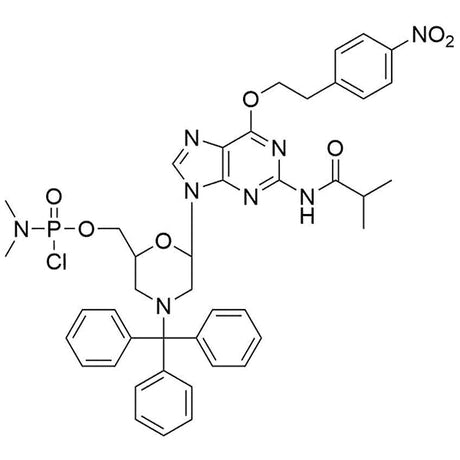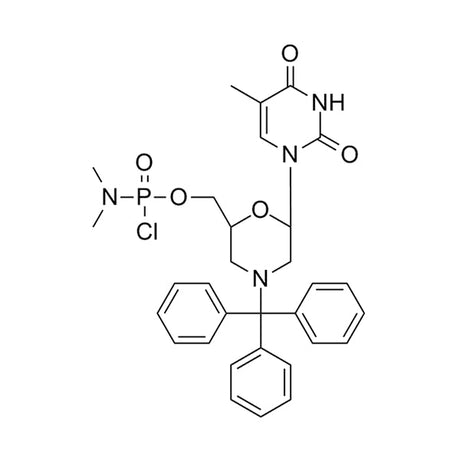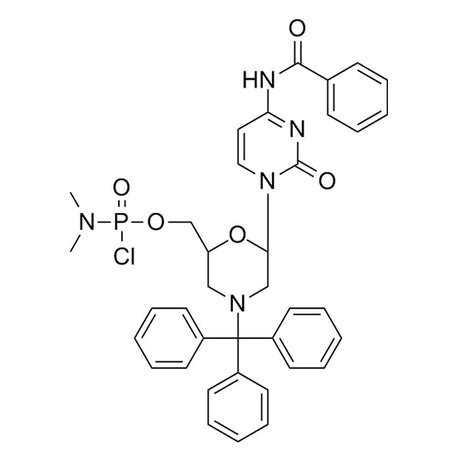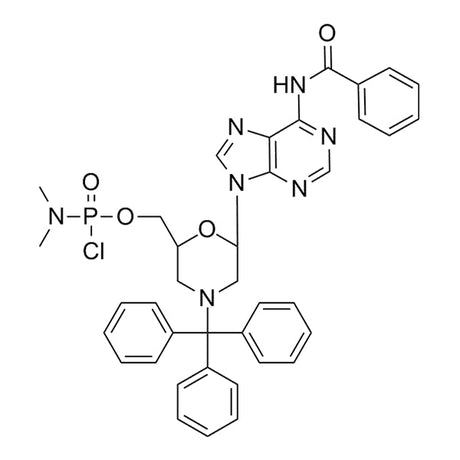General structure of PMO Monomer
What are PMO Monomers?
PMO (Phosphorodiamidate Morpholino) monomers are specialized synthetic units designed for constructing morpholino oligonucleotides. Each monomer consists of three essential components: a morpholino ring that replaces the natural sugar moiety while maintaining base-pairing capability, a nucleobase (adenine, cytosine, guanine, thymine, or uracil) for specific recognition, and a phosphorodiamidate linkage that forms the oligonucleotide backbone. This unique architecture provides exceptional RNA binding affinity and nuclease resistance.
General Synthesis Approach
PMO monomers are synthesized through a multi-step organic synthesis process:
- Morpholino ring formation from protected sugar precursors
- Nucleobase incorporation via stereospecific coupling reactions
- Phosphorodiamidate moiety installation through phosphitylation and oxidation
- Protective group introduction (typically Fmoc or trityl groups) for controlled oligomerization
Application in Synthesis
PMO monomers are specifically designed for solid-phase oligonucleotide synthesis:
-
Automated Oligonucleotide Assembly: Used in standard DNA synthesizers with modified protocols for stepwise chain elongation
-
Solid-Phase Synthesis: monomers are sequentially added to a growing chain attached to solid support (e.g., controlled pore glass)
-
Deprotection-Coupling Cycles: Each addition cycle involves temporary protecting group removal, monomer coupling, and capping steps
-
Final Processing: Completed oligonucleotides are cleaved from support and purified for downstream applications
This synthesis approach enables production of PMO oligonucleotides for therapeutic and research applications, particularly benefiting from the monomers' enhanced stability and binding properties.









